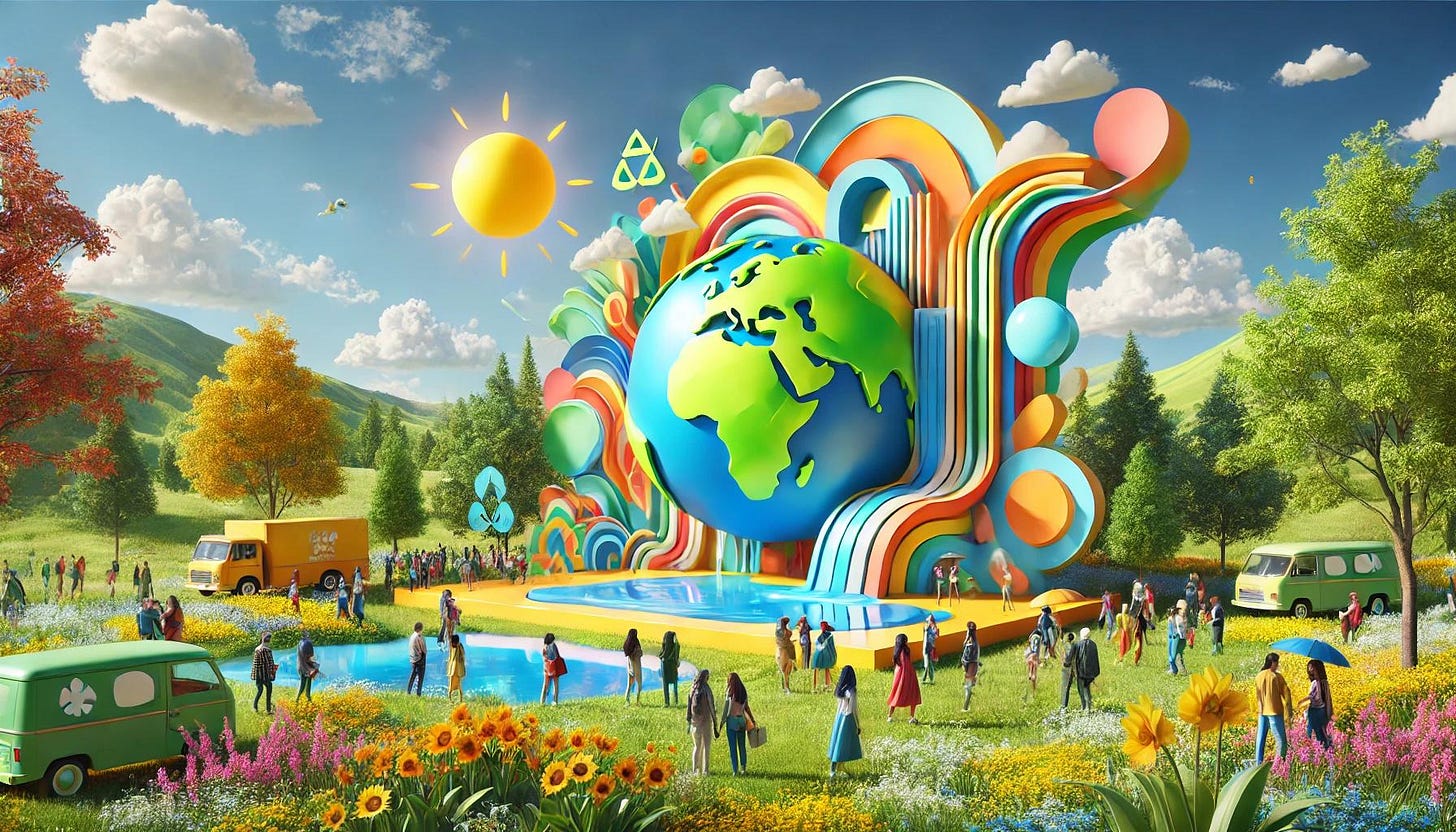The Green Renaissance: Art and Activism Unite
How Artists Are Using Their Platforms to Inspire Climate Action
In a world where climate change continues to pose an existential threat, artists are emerging as powerful voices for environmental activism.
This modern movement, often called the "Green Renaissance," is transforming how we perceive environmental issues by blending creativity with advocacy.
Through visual narratives that resonate deeply with audiences, artists are not only raising awareness but also inspiring action.
The Role of Artists in Climate Change Activism
Art has long been a medium for social and political expression, and the climate crisis is no exception.
Today, a new wave of artists is using their craft to speak out against environmental degradation, challenge unsustainable practices, and offer a vision of a greener future.
These artists are creating works that engage the public, provoke thought, and inspire tangible change.
One standout example is Olafur Eliasson, a Danish-Icelandic artist known for his large-scale installations.
In 2014, Eliasson's "Ice Watch" project made a powerful statement about global warming by bringing 12 massive blocks of melting Greenlandic ice to public squares in Copenhagen, London, and Paris.
As the ice melted, it gave viewers a visceral sense of the effects of climate change. By making the issue tangible, Eliasson turned an abstract problem into something people could physically experience.
His work encouraged individuals to contemplate their relationship with the environment and take steps toward climate action.
Enjoying the insights? Help keep the content flowing—subscribe for free or become a paid supporter of independent journalism!
How Visual Art Is Raising Environmental Awareness
Visual art's ability to transcend language makes it an effective tool for raising awareness about climate change.
Murals, installations, and street art can reach diverse audiences, prompting reflection and engagement in ways traditional activism might not.
Faith XLVII, a South African street artist, is another prominent figure in this movement.
Her piece, "The Unbound," a series of murals in cities worldwide, highlights the relationship between humans and nature.
By portraying animals and plants in urban spaces, Faith XLVII draws attention to biodiversity loss and ecological destruction and encourages onlookers to consider their own role in the planet's future.
Famous Environmental Artists Leading the Green Renaissance
Beyond individual projects, entire movements have sprung up around the intersection of art and environmentalism.
The Cape Farewell project, founded by artist David Buckland, is a collective of artists, scientists, and writers collaborating on exhibitions and campaigns to combat climate change.
By bringing creatives and academics together, Cape Farewell explores how art can communicate scientific findings in ways that stir emotions and inspire activism.
Their "Art and Climate" exhibitions have traveled the world, blending art and science to tell compelling stories of climate change's impact.
In a similar vein, American artist Maya Lin is widely known for her memorials, but her environmental works are equally impactful.
Her ongoing project "What is Missing?" is a global, multi-platform initiative focused on biodiversity loss and habitat destruction.
By combining art, science, and technology, Lin raises awareness of species extinction and offers solutions for conservation.
The Intersection of Creativity and Climate Action
What makes the Green Renaissance so compelling is how it bridges the gap between creativity and activism.
As society grapples with the enormity of the climate crisis, artists are providing fresh perspectives and fostering empathy through their work.
In some cases, artists collaborate directly with environmental organizations, governments, and local communities to create art that leads to direct action.
In 2019, the United Nations Development Programme teamed up with Argentine artist Tomás Saraceno for the "Aerocene Pacha" project.
Saraceno’s balloon-like sculpture, which floated above the Salinas Grandes salt flats in Argentina, was a striking visual statement on humanity’s dependence on fossil fuels.
Powered entirely by solar energy, the sculpture demonstrated the potential of renewable energy while calling attention to the environmental degradation of the region.
This project exemplified how art can serve as both a symbol of innovation and a call for sustainability.
How You Can Support the Green Renaissance
Supporting the Green Renaissance doesn’t require an artist’s touch—anyone can contribute to the movement.
Attending exhibitions, sharing climate-themed art on social media, and supporting artists who focus on environmental issues are simple yet effective ways to participate.
Additionally, many organizations working at the intersection of art and activism offer platforms for collaboration, enabling individuals to contribute their skills and resources to the cause.
Conclusion
The Green Renaissance is a powerful testament to how art and activism can unite in the fight against climate change.
Artists like Olafur Eliasson, Faith XLVII, and Maya Lin use their platforms to create visual narratives that engage the public and inspire action.
By amplifying environmental messages through creativity, these artists are turning the tide on climate apathy and proving that art has the power to change hearts—and the planet.
As the climate crisis continues to unfold, the role of artists in shaping public discourse and inspiring action will only become more critical.
Through their work, we are reminded of the beauty and fragility of the natural world and, more importantly, the urgent need to protect it.




